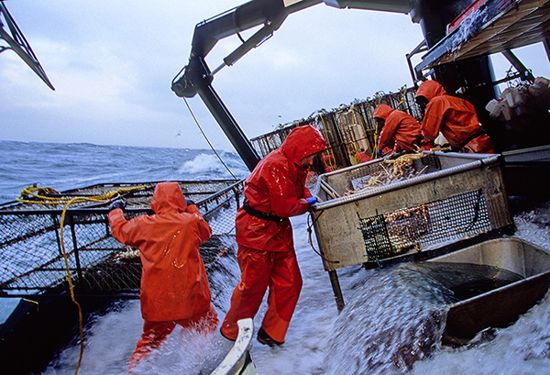Porn Discounts Sex Games Porn Games Juegos XXX Hentai Games PornStar Games 3D Porn Tantaly Sex Doll Cupsland Sextoy Live Cams
Live Sex Free Live Sex Free Sex Games Páginas Porno Rose Toy Free OnlyFans Celebrity Fappening Celebrity Sex Videos TikTok Porn Best OnlyFans
Live Sex Free Live Sex Free Sex Games Páginas Porno Rose Toy Free OnlyFans Celebrity Fappening Celebrity Sex Videos TikTok Porn Best OnlyFans
Published on 2023/10/23
YOU WON'T BE ABLE TO TELL REALITY FROM FICTION ANYMORE
We all know that the media can manipulate the masses for various reasons, and AI has the potential to worsen this issue by allowing even more personalization and manipulation of the information that is presented to the public.We know that the media can manipulate the masses due to a range of interests and factors that influence how information is presented. These interests can be political, economic, or ideological.
Media owners often have personal or business agendas that influence news coverage and the narrative presented to the public. Additionally, advertisers and sponsors can also influence media content as their financial support is crucial for the survival of many media organizations. In fact, one of the major advertisers for private media is often the government itself.

On the other hand, artificial intelligence (AI) can play a significant role in this process by allowing greater personalization of the information presented to individuals. The content recommendation algorithms on digital platforms can filter and present information based on users' preferences and pre-existing beliefs, which can result in information bubbles and the amplification of extreme viewpoints. This can lead to polarization and increased susceptibility to information manipulation.
Furthermore, AI can also be used to create fake content that can spread through social media and other channels, further blurring the lines between reality and fiction.
It is crucial to understand that in the fifth-generation warfare, social engineering and misinformation will be the driving force.
In this short video, I show you how current technology can make you believe whatever they want you to, and you won't have a way to refute it.
ExtraBall
AI is even reaching Halloween.

|
➡️ Let's do real, be real with Tantaly, the sex doll torso leader |
ExtraBall2
(Clicking on these links daily you support ALRNCN's work. They're collaborators or sponsors and, by visiting their sites, they like us even more)







EARTHQUAKE IN MYANMAR
A powerful 7.7-magnitude earthquake struck Myanmar on March 28, 2025, causing severe damage in the country and also affecting neighboring Thailand.
- In Myanmar, the death toll has surpassed 1,700, with thousands injured or missing. The hardest-hit area is Mandalay, where key infrastructure has been heavily damaged.
- In Thailand, the quake caused a construction site collapse in Bangkok, leaving at least 17 dead, 33 injured, and over 80 missing.
- The international community responded quickly: the WHO sent tons of medical supplies, while countries like China, India, and the EU provided aid and rescue teams.
- Search and rescue efforts are still ongoing, but access to affected areas remains difficult.

# Watch videos
ExtraBall by david
Today’s slow-motion moment.
ExtraBall2
(Clicking on these links daily you support ALRNCN's work. They're collaborators or sponsors and, by visiting their sites, they like us even more)











ARMORED QUAD
If weapons didn’t exist, this wouldn’t be necessary. But since they do, we have to build something that can withstand them. And so we keep going—always one step ahead, or maybe just one step back.
It begs the question: are we really progressing, or just caught in an endless cycle of attack and defense?

# Watch video
ExtraBall
Hot dog. Very hot dog.
ExtraBall2
(Clicking on these links daily you support ALRNCN's work. They're collaborators or sponsors and, by visiting their sites, they like us even more)

























RECOMMENDED SITES
 Add your site
Add your site
- Entensity
- Motherless
- BoobieBlog
- Babes & Bitches
- Erotic Beauties
- celeb-stalker.com
- drunkenstepfather
- Candid Teens
- sweetlicious
 Add your site
Add your sitePorn Discount
💩 CrazyShit
🤪 eFukt
NudeChatGirls
👉🍑 Top XXX Pictures
Bingo Porno
Best Porn Blog Sites
Sex Games
Real Amateur Porn
MrPornGeek
CamBB.xxx
ChatSex.xxx
Comepollas
PornScn Free Porno
AI Girlfriend App
DeepNude AI

















TRIBE OF WOMEN SHOPPING AT SPAR
walter
Watching a group of Black women, seemingly from a tribal community, walking around completely naked—apart from a small loincloth—through the well-lit aisles of a SPAR supermarket feels surreal. Like National Geographic suddenly crashing into your local grocery store.
A scene that, in their context, might be the most natural thing in the world, but through Western eyes it triggers an instant brain glitch.
It’s a brutal reminder that what we call “normal” is just one version of many. And that there are places where the body isn’t hidden—it’s simply lived. Funny thing is, you’re not even sure what shocks you more: the nudity itself, or seeing it in a setting that, to you, plays by totally different rules.

# Watch video
ExtraBall
When you finally find love.
ExtraBall2
(Clicking on these links daily you support ALRNCN's work. They're collaborators or sponsors and, by visiting their sites, they like us even more)











SHADOWOLOGY VOL2
david
A couple of years ago, we talked on ALRNCN about the work of Vincent Bal, a Belgian artist and creative who’s been sharing his funny and original pieces on social media for a while now.

# Watch Videos
ExtraBall
ExtraBall2
(Clicking on these links daily you support ALRNCN's work. They're collaborators or sponsors and, by visiting their sites, they like us even more)











Contact
You can tell us whatever you want via email: [email protected]
If you prefer, you can use this contact form:
If you prefer, you can use this contact form:






THE GENDER PAY GAP EXPLAINED IN A SINGLE VIDEO
david
We’ve all heard about the infamous "gender pay gap": that sinister conspiracy where men supposedly earn more "for doing exactly the same job," because obviously, the evil patriarchy just loves paying women less out of sheer cruelty, keeping them firmly under its thumb—despite the fact that this practice is literally illegal in almost every developed country.
But fine, let’s play along with that idea for a moment: men earn more ON AVERAGE than women, but honestly, have you ever stopped to think why men statistically take home higher salaries? Or do you just buy into it because it’s a mantra repeated endlessly? Maybe—just maybe—it’s because men are out there freezing their asses off on deep-sea fishing boats, getting tossed around by violent storms, handling chains heavier than your car, or sweating away on oil rigs and construction sites, risking their lives every single day. Perhaps it’s related to voluntarily choosing insanely dangerous, physically exhausting, and generally miserable jobs that pay better precisely because no sane person would do them willingly.
So yes, ladies and gentlemen, a pay gap certainly exists. And it seems firmly located in places where most people wouldn't set foot for a million dollars, let alone for 20 or 30 grand a month. But sure, go ahead and keep believing the gap is just the patriarchy flexing its muscles from comfy offices.
And this, dear friends, is the cold, wet, gritty truth behind the famous pay gap.

# Watch video
ExtraBall
Slow motion of the day.
ExtraBall2
(Clicking on these links daily you support ALRNCN's work. They're collaborators or sponsors and, by visiting their sites, they like us even more)










MOTORPORN VOL69
This girl tries to imitate the sound of a sports car revving. And she nails it—not with precision, but with attitude. There’s something about the way she does it, that mix of sexy and innocent, that feels like a car engine purring just before it gets serious. Like those seconds right before the climax, when everything’s shaking but hasn’t exploded yet.
The roar of a V8 isn’t that far from the moan of a woman enjoying herself. That deep, growling, savage sound—or that gentle idle whispering in your ear: "Get ready for what’s coming."
Machines that stir things up. Women that raise your pulse. And sounds that turn you on without laying a finger on you.

# Watch videos
ExtraBall by david
Today’s slow motion moment.
ExtraBall2
(Clicking on these links daily you support ALRNCN's work. They're collaborators or sponsors and, by visiting their sites, they like us even more)


























